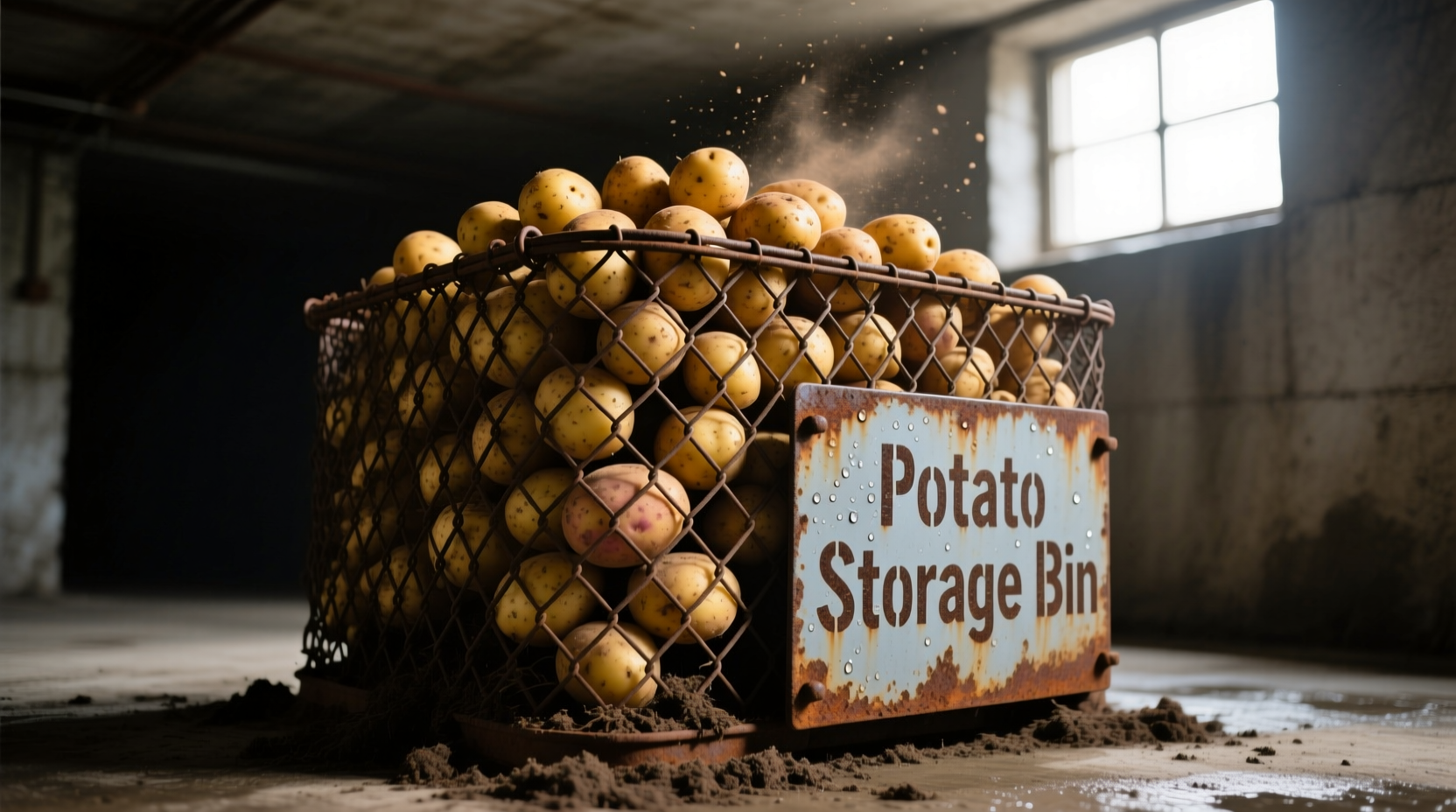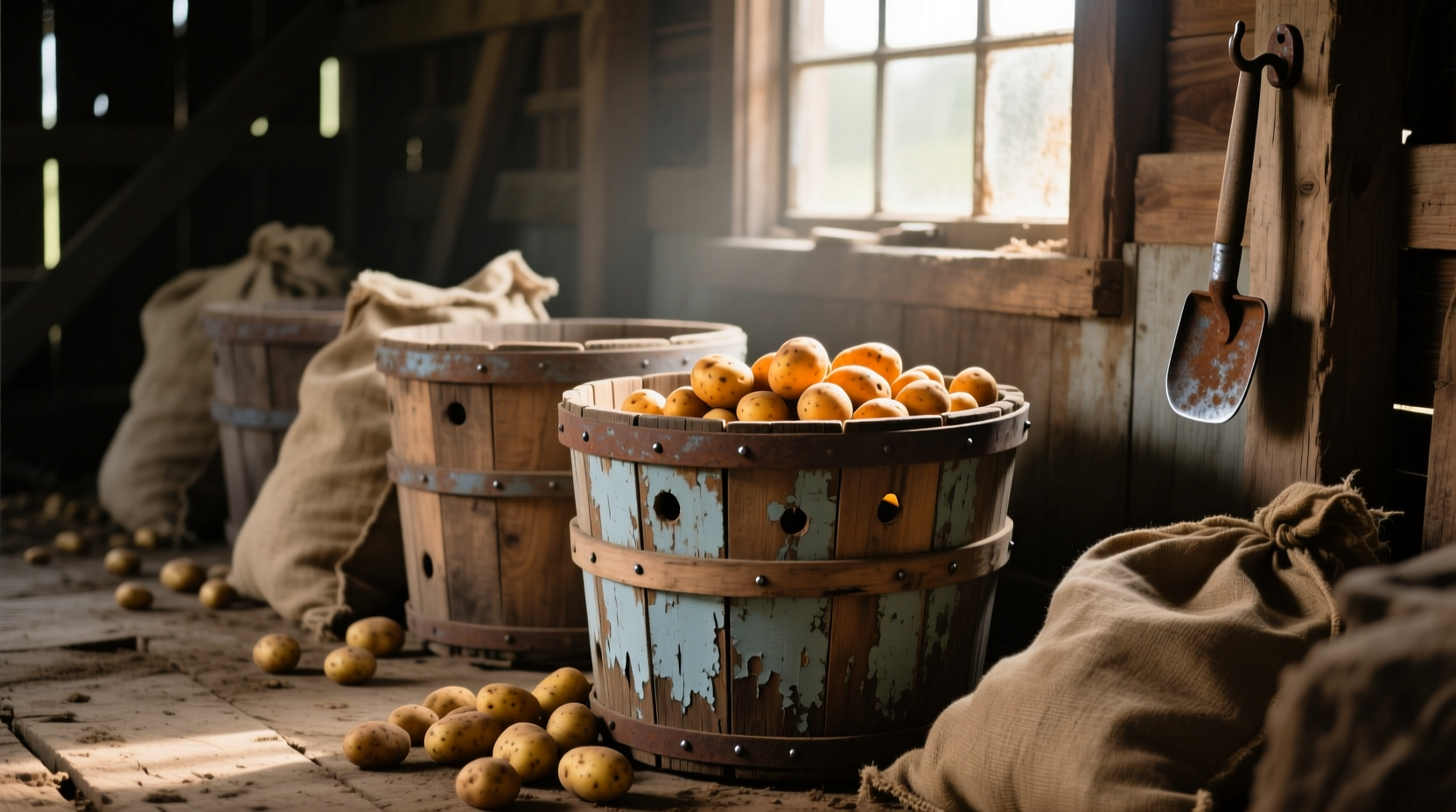Have you ever wondered why your potatoes sprout or go bad within weeks of purchase? The answer lies in improper storage conditions. Potatoes require specific environmental factors to maintain freshness, and the right storage container makes all the difference between enjoying firm, flavorful potatoes for months versus watching them deteriorate in weeks.
Why Proper Potato Storage Matters
Potatoes aren't just another pantry item—they're living tubers that continue to respire after harvest. When stored incorrectly, they either dehydrate too quickly or develop excess moisture that leads to rot. The United States Department of Agriculture (USDA) confirms that improper storage accounts for nearly 30% of household potato waste annually. Understanding the science behind potato storage helps you make informed decisions about which container works best for your kitchen.
The Science Behind Potato Preservation
Potatoes thrive in cool, dark, and moderately humid environments. According to research from the University of Idaho's College of Agricultural and Life Sciences, the ideal storage conditions include:
- Temperature: 45-50°F (7-10°C)
- Relative humidity: 90-95%
- Complete darkness
- Adequate ventilation
Exposure to light triggers chlorophyll production, causing greening and the development of solanine—a toxic compound. Temperatures above 50°F accelerate sprouting, while temperatures below 40°F convert starches to sugars, affecting both flavor and cooking properties.
Traditional Storage Methods from Potato Origins
Centuries before modern storage containers, indigenous communities in the Andes developed sophisticated potato preservation techniques. Maya Gonzalez, who has documented traditional food practices across South America, explains: “Andean farmers stored potatoes in qullqas—specialized stone structures built into mountainsides that maintained consistent cool temperatures and airflow. These ancient methods inform today's best practices for home storage.”
| Storage Method | Shelf Life | Quality Preservation | Common Issues |
|---|---|---|---|
| Wire mesh bin | 3-6 months | Excellent | Requires dark location |
| Ventilated wooden crate | 2-5 months | Very Good | Wood may absorb moisture |
| Plastic container with vents | 1-3 months | Good | Condensation buildup |
| Cardboard box | 4-8 weeks | Fair | Breaks down when damp |
| Refrigerator | 1-2 weeks | Poor | Sugar conversion, texture changes |
| Plastic bag | 2-3 weeks | Poor | Rapid sprouting and rot |
Modern Potato Bin Options Compared
Not all containers marketed as “potato bins” deliver optimal storage conditions. Let's examine the most effective options based on scientific principles and practical kitchen experience.
Wire Mesh Bins: The Gold Standard
Professional kitchens and agricultural experts consistently recommend wire mesh containers as the best option for home potato storage. The open design promotes constant airflow while preventing moisture buildup. Look for bins with:
- Sturdy construction that won't bend under weight
- Mesh openings large enough for proper circulation
- Optional dark cover or storage in a dark location
Ventilated Wooden Crates: Natural and Effective
Wooden crates with slats provide excellent breathability while maintaining humidity levels. The University of Maine Cooperative Extension notes that wood's natural properties help regulate moisture better than plastic alternatives. Choose untreated wood to avoid chemical transfer to your food.
Specialized Potato Storage Containers
Many manufacturers now produce containers specifically designed for potato storage. The best models feature:
- Opaque materials to block light completely
- Strategic ventilation holes
- Removable drawers for easy access
- Stackable design for space efficiency

Common Potato Storage Mistakes to Avoid
Even with the right container, improper usage can compromise your potato storage. Avoid these common errors:
Storing Potatoes with Onions
Many people store potatoes and onions together for convenience, but this practice significantly reduces shelf life. Onions release ethylene gas and moisture that accelerate potato sprouting. Keep these vegetables in separate containers, preferably in different areas of your pantry.
Washing Before Storage
Clean potatoes only when ready to use. Excess moisture trapped during storage creates ideal conditions for mold and bacterial growth. If potatoes are particularly dirty, wipe them gently with a dry cloth before storing.
Using Non-Ventilated Containers
Plastic bags and sealed containers create a humid microenvironment that promotes rot. The Cornell University Food Science Department reports that potatoes stored in sealed plastic bags develop soft rot 73% faster than those in ventilated containers.
DIY Potato Storage Solutions
Don't have a dedicated potato bin? Create an effective storage solution with common household items:
- Brown paper bag method: Store potatoes in a paper bag inside a dark cupboard. The paper absorbs excess moisture while allowing airflow.
- Cardboard box hack: Line a cardboard box with newspaper and punch ventilation holes in the sides. Store in a cool, dark location.
- Repurposed fruit crate: Clean wooden fruit crates from farmers' markets make excellent potato storage containers.
Seasonal Storage Adjustments
Your storage approach should change with the seasons. During summer months when pantry temperatures rise, consider these adjustments:
- Move potatoes to the coolest part of your home (often a basement)
- Check potatoes more frequently for signs of sprouting
- Avoid storing near heat sources like ovens or refrigerators
- Reduce storage quantities and buy smaller amounts more frequently
Winter brings different challenges, particularly in homes with forced-air heating that dries the air. In these conditions, place a small bowl of water near your potato storage to maintain adequate humidity levels.
When to Refrigerate Potatoes
Contrary to popular belief, refrigeration is generally unsuitable for whole potatoes due to the starch-to-sugar conversion that occurs at cold temperatures. However, the National Center for Home Food Preservation recommends refrigerating cut or peeled potatoes in water to prevent browning. For long-term storage of whole potatoes, always choose a cool, dark pantry location over the refrigerator.
Recognizing Properly Stored Potatoes
Well-stored potatoes maintain firm texture, earthy aroma, and smooth skin. Check your stored potatoes monthly for:
- Firmness (soft spots indicate rot)
- Absence of sprouts
- No green discoloration
- No musty odors
Remove any compromised potatoes immediately to prevent spoilage from spreading to healthy tubers. A single bad potato can ruin an entire batch within days.
Extending Potato Shelf Life Through Selection
Your storage success begins at the grocery store. Choose potatoes with these characteristics for maximum shelf life:
- Firm texture with no soft spots
- Smooth, unblemished skin
- No green tints
- No visible sprouts
- Uniform size (smaller potatoes often store better)
Russet and Yukon Gold varieties typically store longer than red or fingerling potatoes. If you have multiple varieties, store them separately as their ideal conditions differ slightly.











 浙公网安备
33010002000092号
浙公网安备
33010002000092号 浙B2-20120091-4
浙B2-20120091-4